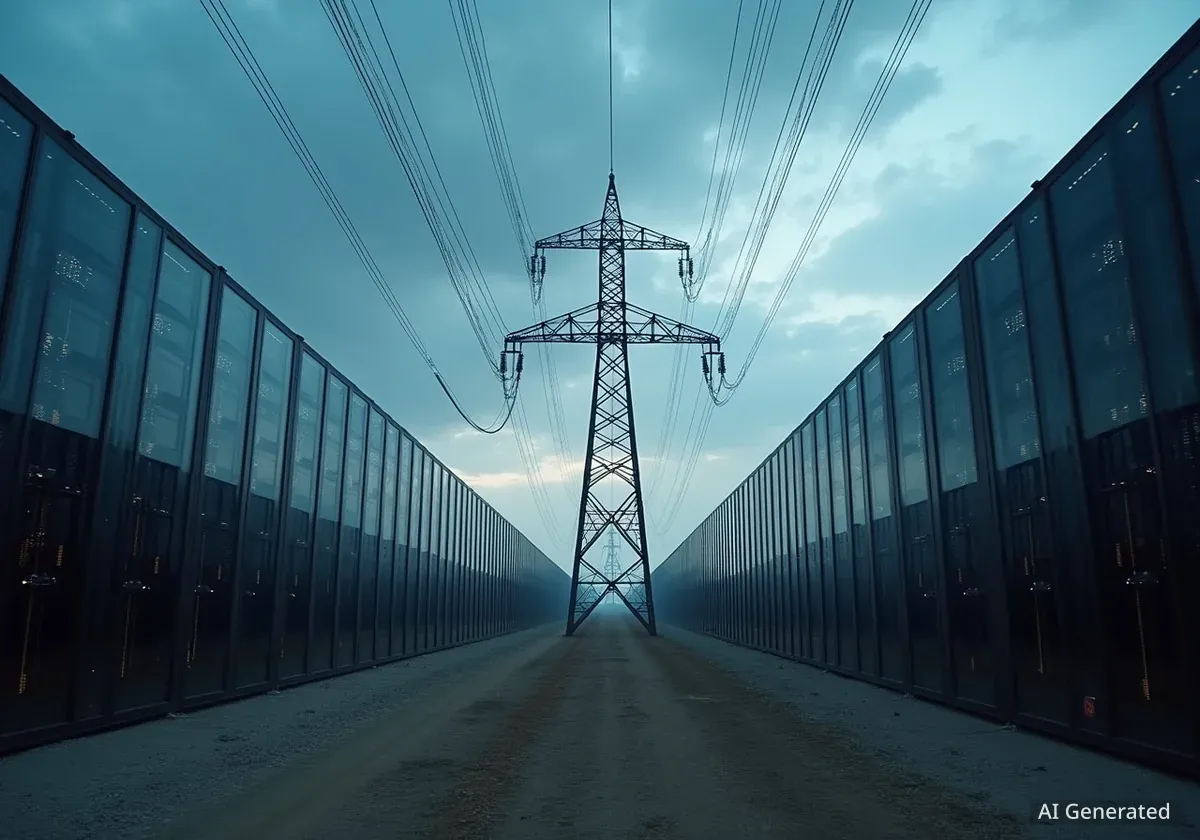OpenAI, in partnership with NVIDIA, has announced plans for a series of artificial intelligence data centers that will consume up to 17 gigawatts of electricity. This massive power requirement, driven by skyrocketing demand for AI services, is equivalent to the combined peak energy use of New York City and San Diego and has prompted significant concern from energy and computer science experts about grid stability and environmental consequences.
Key Takeaways
- OpenAI's planned AI data centers will require up to 17 gigawatts of power, a figure that has escalated rapidly from earlier projections.
- This energy demand is comparable to the combined electricity consumption of Switzerland and Portugal.
- Experts question the feasibility of sourcing this power, especially from clean energy, and warn of potential strains on electrical grids and water supplies.
- While CEO Sam Altman favors nuclear power for the long term, specialists argue it cannot be developed fast enough to meet near-term needs.
An Unprecedented Scale of Energy Demand
OpenAI's ambitious expansion reflects the explosive growth of artificial intelligence. The company revealed a plan to build AI data centers that initially require 10 gigawatts of power, with additional projects bringing the total to 17 gigawatts. Sam Altman, CEO of OpenAI, stated that this infrastructure is essential to support services like ChatGPT, which has seen its usage increase tenfold in the last 18 months.
To put this figure into perspective, the city of New York consumes approximately 10 gigawatts during peak summer demand. San Diego's grid strained under a load of over 5 gigawatts during a 2024 heatwave. The combined 17-gigawatt projection for OpenAI's projects surpasses the power needed for both cities operating at maximum capacity.
By the Numbers: AI's Power Footprint
- 17 Gigawatts: Total planned power consumption for OpenAI's new data centers.
- 80 Gigawatts: Typical operational capacity of the entire Texas power grid.
- 20%: The portion of the Texas grid that OpenAI's projects would represent.
- $850 Billion: The total estimated investment for the planned data center sites.
Fenqi You, an energy systems professor at Cornell University, offered another comparison. "Ten gigawatts is more than the peak power demand in Switzerland or Portugal," he explained. "Seventeen gigawatts is like powering both countries together."
Experts Raise Alarms Over Feasibility and Impact
The announcement has been described as a pivotal moment by academics who have long tracked the growing energy footprint of computing. Andrew Chien, a professor of computer science at the University of Chicago, noted the dramatic shift occurring in the industry.
"I’ve been a computer scientist for 40 years, and for most of that time computing was the tiniest piece of our economy’s power use," Chien said. "Now it’s becoming a large share of what the whole economy consumes."
Chien labeled the development as both "exciting and alarming," pointing out that computing could account for 10% to 12% of the world's total power consumption by 2030. He expressed concern over the sheer scale of the projects, especially in relation to existing infrastructure. "You’re talking about an amount of power that’s comparable to 20% of the whole Texas grid," he noted, referring to the location of one of the new data centers.
The Search for a Viable Power Source
To meet this demand, Sam Altman has publicly advocated for nuclear energy, investing in both fission and fusion startups. He has positioned nuclear power as the necessary backbone for the future AI-driven economy. However, experts are skeptical about the timeline.
"As far as I know, the amount of nuclear power that could be brought on the grid before 2030 is less than a gigawatt," Chien stated. He emphasized that nuclear development is a slow process, making it an unlikely solution for the immediate demand of 17 gigawatts.
The Nuclear Power Timeline
Building a new nuclear power plant is a lengthy process. In the United States, it can take years just to obtain the necessary permits and licenses before construction can even begin. The entire process, from planning to operation, often spans more than a decade, making it an impractical solution for the tech industry's rapid expansion plans.
Professor You from Cornell agreed, stating that while nuclear might be unavoidable in the long run, there is not enough spare capacity from any source in the short term. "A typical nuclear plant takes years to permit and build," he said. "In the short term, they’ll have to rely on renewables, natural gas, and maybe retrofitting older plants."
Environmental Costs and Corporate Promises
The immense energy requirements of these AI data centers cast doubt on the technology industry's commitments to environmental sustainability. Many large tech companies have made net-zero pledges, but the power demands of advanced AI may make those goals unattainable.
"We have to face the reality that companies promised they’d be clean and net zero, and in the face of AI growth, they probably can’t be," Chien warned. He urged for a broader societal discussion about the environmental trade-offs of large-scale AI deployment.
The environmental impact extends beyond carbon emissions. Key concerns include:
- Water Consumption: Cooling the millions of high-performance GPUs, such as NVIDIA's new Vera Rubin line, requires vast amounts of fresh water, often in regions already experiencing water scarcity.
- Biodiversity: The construction of massive data center campuses can disrupt local ecosystems and wildlife habitats.
- Electronic Waste: The AI industry's rapid hardware upgrade cycle, with new processors released annually, generates a significant stream of electronic waste containing toxic materials.
As investment pours into these projects, with NVIDIA alone pledging up to $100 billion to support the expansion, experts stress the need for greater accountability. "They told us these data centers were going to be clean and green," Chien concluded. "But in the face of AI growth, I don’t think they can be. Now is the time to hold their feet to the fire."





